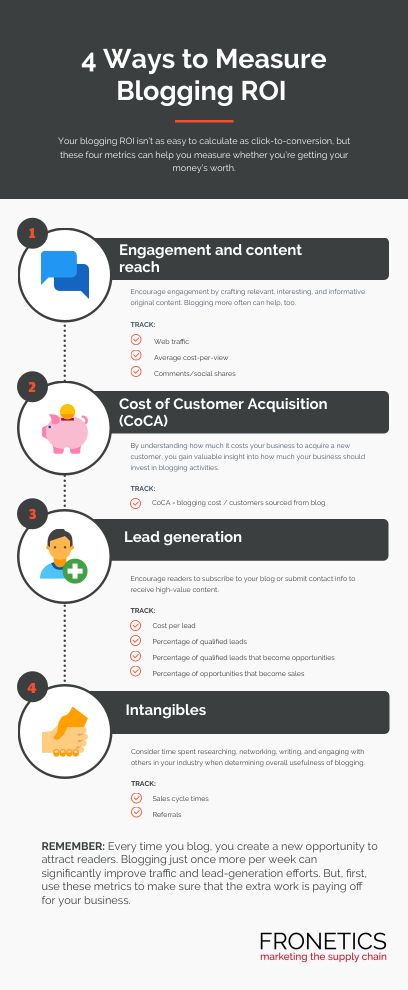
by Fronetics | Mar 27, 2018 | Blog, Content Marketing, Current Events, Marketing, Social Media
Also in social media news March 2018: Snapchat allows branded content ads; Facebook is testing Messenger Broadcasts; and Twitter tests prioritizing news tweets.
With the increasing popularity of automation tools and chatbot technology, social media platforms are working to regulate how brands are reaching their target audiences. Trying to ensure that users aren’t being inundated with spam posts or fake news, Twitter, Facebook and many others are coming out with stricter rules and regulations. This could mean extra work for smaller brands trying to keep up with the latest changes to make sure their content is getting as much reach as possible.
But there are real benefits to using automation tools, especially when it comes to social media management. Facebook, for example, is testing a new Messenger Broadcast that would help smaller businesses, which don’t already utilize chatbots, blast messages to users that have started a conversation with their Pages. These small but helpful updates will allow companies to have a greater reach without extra work for their marketers.
Here’s your social media news for March 2018.
Facebook/Cambridge Analytica scandal furthers distrust
Facebook issued yet another apology to its users after news broke that a quiz app developed by a Cambridge University researcher leaked personal data from about 50 million people in 2014. Political consulting firm Cambridge Analytica, which was affiliated with President Donald Trump’s 2016 election campaign, allegedly used the data to create psychological profiles to influence voters. Users responded with a #deleteFacebook campaign, in which those angered by Facebook’s mishandling of the data are encouraging widespread removal of all Facebook-associated apps, including Instagram and WhatsApp. Fronetics is staying on top of this situation and will continue to provide social media recommendations in light of such reports.
Facebook ends Explore Feed
Adam Mosseri, head of Facebook News Feed, announced plans to discontinue the Explore Feed on the website in early March. Facebook introduced Explore Feed in October as, essentially, a second News Feed that acted as a dedicated place for Pages. User feedback showed that “Explore isn’t an effective way for people to discover new content on Facebook,” and actually made it harder for users in test areas to access important information.
Twitter cracks down on automation and bot usage
Twitter released a new set of rules and regulations that prohibits developers from using Twitter automation and bot programs to simultaneously post identical content from multiple accounts. It also bans users from performing actions — such as likes, retweets, or scheduling tweets — from multiple accounts. “One of the most common spam violations we see is the use of multiple accounts and the Twitter developer platform to attempt to artificially amplify or inflate the prominence of certain Tweets,” writes Yoel Roth on Twitter’s blog.
YouTube adds new live-streaming tools and features
YouTube introduced a new chat replay feature that unfolds exactly as it did when the video was streaming live. Users can now watch videos that originally aired live and follow the conversations that took place alongside of the video, even after the live stream is over. This new feature supports YouTube’s mission to add “ways to watch live videos and interact with your community in real time.”
Facebook tests messenger broadcasts
Facebook is testing a new messaging tool directed at small businesses that haven’t jumped on the chatbot bandwagon. TechCrunch reports that Messenger Broadcasts allow companies to blast a message to anyone who has already started a conversation with them in Messenger. The new tool is currently being tested among a small percentage of Pages in the U.S., Mexico, and Thailand. Facebook hopes to turn the messaging tool into a paid product for small businesses and limit the number of messages that can be broadcast to cut down on spam.
Twitter test makes news the first thing users see in the timeline
Twitter recently confirmed a test of a news reel that would put news highlights at the top of users’ feeds. According to BuzzFeed, Twitter will select news items to appear in boxes at the top of the timeline. Twitter says the test is designed to “highlight the platform’s bent towards current happenings” while making news easier to find. This test comes in the aftermath of Facebook also trying to prioritize news events over Pages, while also fighting increasing fake news.
Snapchat allows branded content ads
Snapchat will now allow publishers to share branded content among the articles and videos they post. “Starting now Discover publishers are allowed to distribute branded content within the Snap Ads that run in their Publisher Stories,” a Snapchat spokesman said in an emailed statement. Snapchat Discover generated more than $100 million in ad revenue for its media partners in 2017, and this latest update will hope to boost even more ad sales.
Related posts:


by Fronetics | Mar 26, 2018 | Blog, Content Marketing, Logistics, Marketing, Social Media, Supply Chain
Social media scheduling tools can make social media management much easier while improving your bottom line.
Managing your business’ social media accounts might sound like a simple task — a fun one, even. But once it falls on your plate, it won’t take you long to realize: it’s a lot of work. That’s not to say that the work can’t be enjoyable. But the sheer volume can be overwhelming.
For example, Fronetics recommends posting to Twitter 40 times a day. Imagine your productivity levels if you needed to stop what you’re doing 40 times a day to craft and post a tweet. You get the picture.
The beauty of marketing automation
Here’s where marketing automation can help.
Social media scheduling tools can make your job much easier — and improve your bottom line. In fact, according to HubSpot, businesses using marketing automation to nurture leads increased qualified leads by 451%.
Essentially, social media scheduling tools let you plan and schedule content across your social networks. There are plenty of free and paid options for you to explore, though two of our favorites are HubSpot and Hootsuite.
HubSpot’s comprehensive CRM and marketing platform includes the ability to automatically post to social media when you publish content, as well as in-depth analytical tools for determining the best time to post to social media platforms. Monitor social mentions and link your social media activity with larger marketing campaigns to determine ROI.
One of the most widely used automation tools on the market, Hootsuite lets you keep track of various social media channels at once. It also helps you perform brand monitoring, letting you know when you brand is mentioned, and what your customers are saying.
3 tips for using social media scheduling tools
Hopefully, you’re starting to get excited about the possibilities of automating your social media marketing tasks. Here are a few tips to keep in mind as you move forward.
1) Timing is everything
Good social media scheduling tools will also let you monitor the times of day when people read your content and interact with your brand on social media. Make use of these important metrics and schedule your content strategically for days and times of maximum exposure.
2) Diversify
Keep in mind that someone who follows you on Facebook is likely to also follow you on Instagram and Twitter. For the savvy social media marketer, this means that content should be optimized for each platform, rather than just repeated across multiple platforms, at the risk of boring your followers.
This doesn’t mean you have to reinvent the wheel each time you schedule content, but play to the strengths of each network. For example, Facebook allows more text, while Instagram is great for eye-catching images or stories.
3) You’re not off the hook
Automation is a highly effective tool for social media management — but it’s just part of the picture. Used properly, it should act as a supplement to your social media activities, like reading and replying to audience comments and interacting with your community.
What social media scheduling tools do you like?
Related posts:


by Fronetics | Mar 22, 2018 | Blog, Content Marketing, Marketing, Strategy
Your blogging ROI isn’t as easy to calculate as click-to-conversion, but these four metrics can help you measure whether you’re getting your money’s worth.
“Exposure and engagement is key when it comes to measuring ROI. Simply publishing a blog post isn’t enough of a success. You have to go deeper and pay attention to things like social share metrics, engagement metrics, and actual conversions that can be tied to the content you’re producing.” — Colin Mathews, Co-Founder, Content Marketer
Why do you blog? It seems like a simple question, but the answer has a huge impact on the content you produce and the outcome of your efforts.
As with all aspects of your business, you should give the return on investment of your content marketing efforts ample attention. That is especially true for blogging ROI, if generating new business is indeed one of the reasons you blog in the first place.
With 53% of marketers saying blog content creation is their top inbound marketing priority, it’s crucial that you’re making sure your hard work is worth the time and money you’re spending on it.
Let’s face it, blogging isn’t free. Creating relevant and interesting content for your blog is highly demanding. The people working to sustain your blog and engage with new audiences through your content are spending valuable time and money. If you want to ensure that these efforts are producing results, it’s imperative to calculate the impact of your blogging on your bottom line.
Calculating blogging ROI isn’t as straightforward as other ROI analysis. You simply can’t rely on click-to-conversion data to give you the full picture. But your blog achievements can be measured in other ways. Here are four categories to measure the effectiveness of your blog.
Infographic: 4 ways to measure your blogging ROI


(Made with Canva)
Final Thoughts
While it can feel a little unwieldy to measure blogging ROI, keeping a strong focus on your goals and objectives will help to lend weight to metrics that ultimately matter the most to you and your business.
Whether you’re looking to generate leads or attract first-time site visitors, your blog is a great place to boost engagement and expand your reach. Focus on making your blog as valuable as possible for your target audience, and you’ll be able to measure the fruits of your labor.
How does your company measure blogging ROI?
Related posts:


by Fronetics | Mar 21, 2018 | Blog, Content Marketing, Logistics, Marketing, Social Media, Strategy, Supply Chain
Use these 10 social media analytics tools to measure the success of your social media efforts.
Analyzing your social media performance is critical to a successful marketing effort, especially in light of recent changes to Facebook’s News Feed. You need the tools to determine what’s working and what isn’t, as well as the best time to post your content for your target audience.
At Fronetics, we use a variety of tools to measure social media success. Here are our 10 favorite social media analytics tools.
Our 10 favorite social media analytics tools
1) Hootsuite
Hootsuite is a social media management tool that can do everything from scheduling social media posts to measuring your social media ROI. The AutoSchedule feature lets Hootsuite determine the best time to publish a post or tweet based on when similar content performed well in the past. It also considers the platform and can publish the same message at different times based on audience engagement on each particular network.
2) Google Analytics
Google Analytics is a robust analytical tool for determining how web users are interacting with your digital assets, including social media. Three custom reports (Best Days to Post on Social Media, Best Time to Post on Social Network by Hour, and the Social Media Traffic by Date and Hour) offer real-time, in-depth insight. Also, Google Analytics is free!
3) Tweriod
Tweriod, a free Twitter tool that helps you know the best time to tweet, is changing the way companies approach their marketing tweets. It will evaluate up to 1,000 of your followers and their tweeting patterns, including schedule, interests, and retweets. You then receive an analysis of when your tweets will receive the most exposure based on that data.
4) Snaplytics
If you’ve jumped on the Snapchat bandwagon, you probably know that Snapchat gives brands relatively little data on performance. Snaplytics gives you data on the performance of your snaps, audience growth, and more.
5) Iconosquare
This tool is specifically for Instagram. It stands out because, in addition to analysis of your normal photos and videos, it gives you insights into Instagram Stories. With higher level plans, you can also get influencer analytics as well.
6) Buzzsumo
Instead of analyzing your brand’s individual social media performance, Buzzsumo takes a different approach: It looks at how content from your website performs on social media.
7) Tailwind
Tailwind lets you track your performance on Pinterest. Although Instagram and Snapchat are getting a lot of buzz these days, users remain extremely active on Pinterest. With Tailwind, you can track trends in followers and engagement and analyze your audience.
8) SproutSocial
SproutSocial offers a customized dashboard with a quick overview of how your social media channels are performing. You also can gain deeper insight into your followers — like gender and age demographics. And you can assess your customer reach and what will work in your favor.
9) ShortStack
This social media contest app provides performance analytics, so you can determine if your efforts are working, or if you’re simply giving away free merchandise.
10) TapInfluence
Influencer marketing is becoming one of the most commonly used social media tactics. TapInfluence is a complete influencer marketing platform that researches potential influencers you want to work with, as well as tracks campaign performance.
What social media analytics tools do you use?
Related posts:


by Fronetics | Mar 20, 2018 | Blog, Content Marketing, Logistics, Marketing, Strategy, Supply Chain
Email workflows will automatically deliver content to leads at designated intervals, inviting them to take action and helping them to move down the sales funnel.
We’ve written before about marketing automation, and what it can do for the supply chain in term of cost- and time-savings. It’s time to get specific about how you can put marketing automation technology to work for you.
There are quite a few highly effective automation tools (including chatbots). Today we’re going to talk about email workflows.
What are email workflows?
These resource-saving tools consist of a series of emails that automatically send to a user at designated intervals. Based on actions a user has taken on your website, they receive emails relating to their interests — or where they are in the sales process — automatically.
Take this example: If someone downloads a resource from your website, an automated email workflow can be triggered to send a thank-you email within 24 hours. After the initial email comes a series of lead-nurturing emails over the next few weeks, continuing to educate the lead about a subject they are interested in, based on the resource they downloaded.
Why use email workflows
HubSpot reports that businesses using this kind of marketing automation to nurture leads receive a 451% increase in qualified leads. Email workflows work, period.
At Fronetics, we recommend clients create email workflows all the time. It allows them to deliver relevant, timely content to leads through automation. That means a sales person doesn’t have to keep track of when a download occurred and remember to send follow-up emails with lead-nurturing content.
Email workflows let you trigger emails based on any information you have about your leads, so you can send the ideal message at the ideal time. Here are some ideas of email workflows you can try:
- Topic workflows, triggered by page views or content offer downloads
- Lead-nurturing workflow, triggered by top-of-the-funnel conversions
- Re-engagment workflow, triggered when a contact has been inactive for a while
- Upsell workflow, triggered by past purchases
- Blog subscriber welcome workflow, triggered when someone subscribes to your blog
By taking the time to create thoughtful email workflows on the front end, you will save your team a lot of time and effort during the sales process. It’s this kind of marketing automation that will streamline your sales and marketing efforts, freeing you up to complete other important tasks.
Related posts:


by Fronetics | Mar 15, 2018 | Blog, Content Marketing, Logistics, Marketing, Strategy, Supply Chain
Here are four simple steps to help you measure your company’s content marketing ROI and the success of your strategy.
Lean-startup pioneer Eric Ries said, “The only metrics that entrepreneurs should invest energy in collecting are those that help them make decisions.” In other words, measure the things that will tell you if an effort was profitable so you know where to put your time and money.
But most companies aren’t using the right metrics to track their content marketing ROI. For example, 83% of B2B enterprise companies (over 1,000 employees) use web traffic as their main metric for measuring content marketing ROI. A spike in homepage hits could be the result of your hard work, but it could also be ghost spam, or even both! So clearly, web traffic isn’t the most reliable metric.
Content marketing ROI is harder to quantify than checking a few quick numbers. But don’t give up hope. In the article How to Measure Content Marketing ROI: A Simple 4 Step Process, marketing consultant Bill Widmer breaks down a simple, four-step process that will quickly and effectively measure your content marketing ROI.
What is content marketing ROI?
Content marketing ROI is how much revenue you gain from content marketing in comparison with what you spend on creating and distributing content. It’s an actual percentage that shows how much revenue you gained vs. how much money you spent. And for a lot of businesses (and bosses), this percentage is very important. They want you to be able to prove that the marketing dollars that are going into your content marketing strategy are actually pulling in new business.
Every company has specific key performance indicators (KPIs) that help shape their marketing strategies. Here at Fronetics, we believe that your content marketing strategy should take these KPIs into consideration when thinking about your ROI:
- Website traffic
- Leads generated
- Conversion rate
- Direct sales
Obviously content marketing has more benefits than these four KPIs demonstrate — including better customer retention, brand awareness, and improved SEO — but to begin to measure your ROI, let’s focus on these four main points.
Measure content marketing ROI in 4 simple steps
1. Download your reverse goal path data.
Andy Crestodina, co-founder and CMO of Orbit Media, suggests:
- Go to your analytics dashboard. Set the date range for at least a year.
- Go to Conversions > Goals > Reverse Goal Path.
- Add a filter like “/blog” so only blog posts show up.
- Sort by Goal Completions.
After this step, you’ll be able see which of your posts have driven the most conversions. But you can’t stop there. These are simply conversion numbers. We want those numbers to become conversion rates, so let’s keep going.
2. Download your pageview data.
In order to calculate a conversion rate, you need to know pageviews. Here’s how to get that information:
- Go to Content > Site Content > All Pages.
- Filter with “/blog” to get only blog posts.
Download this data into the spreadsheet from step one.
3. Get your conversion rate.
Now here’s a little math for you. Divide the data in the “conversions” column by the number in the “unique pageviews” column. This will give you your conversion rate per blog post.
This will show you what your best-performing pieces of content are, and what posts need to be updated to gain more views and shares.
This information will give you valuable insight into the topics that your target audience are reading about and how you can better plan for high-ranking content in the future.
If you have posts or pages that are older — like over a year — and they haven’t gotten any views or conversions, it’s time to think about reworking them to have more appeal to your target audience.
For your actual percentage, you’ll need to calculate how many of these leads have converted to sales.
4. Calculate content marketing ROI based on lead conversions.
Here’s where things get a little more complicated, but still very manageable. You need to start putting tags on your leads according to the content they came from.
You can use programs like WordPress or Blogger to help you automatically tag any leads that came from a specific form. Assuming the form correlates to a single blog post, you will know that any leads with that tag came from that post.
You can also connect your leads with a CRM, such as HubSpot or SalesForce, and track which leads came from specific emails. These programs easily integrate with your analytics and email marketing platforms for up-to-date numbers and data.
Related posts:












